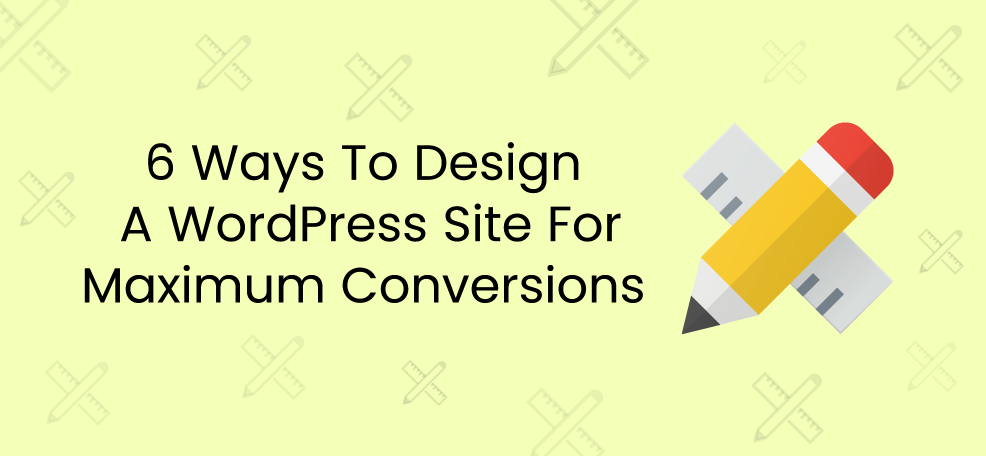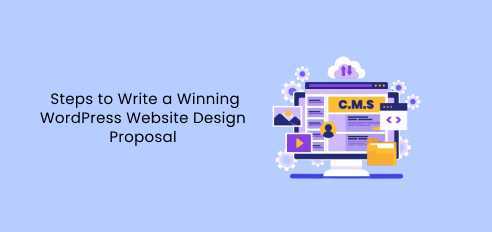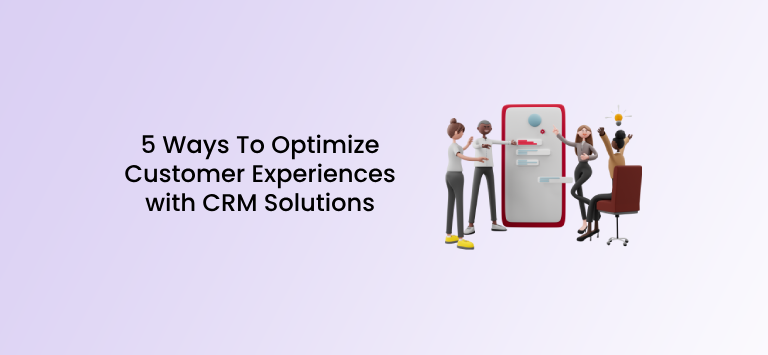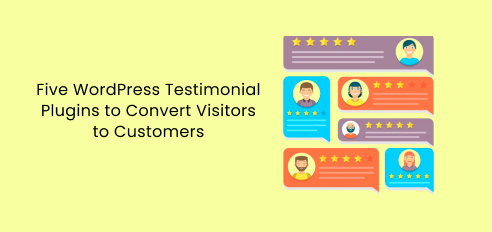WordPress is undoubtedly a dynamic content management platform with widespread popularity. The ease of use, reliability and versatility WordPress offers is the reason that it powers 34 percent of all websites on the internet.
Whether you are building a B2B SaaS website, a personal blog, an eCommerce website or something else, WordPress contains all the tools and support necessary for you to design and develop it. But that is just half the work.
Designing your WordPress site for maximum conversions makes sure that not only do the visitors get a good user experience while using your website, it also fulfills the business objectives by getting the users to convert and generate revenue for your business.
The following are 6 best practices that you need to engage in for designing a WordPress website that brings in maximum conversions.
1. Pick a theme that suits your brand
Choosing the theme for your WordPress website often feels overwhelming. There are thousands of options to choose from, each more appealing than the last. Between the plethora of paid and free themes, selecting one to apply to your web page becomes quite the task.
The key to choosing the theme that fits best is following the existing branding strategy. Pick the theme that goes with your existing logo and other brand material. Since the brand message being sent out remains the same, this ensures consistency and trust in the customer’s eyes and increases their chances of converting.
In case your business doesn’t have an established offline brand or you are going with an online-first strategy, determining the core brand attributes would help you in determining the theme. If a quirky and youthful brand image is what you are looking for, use of vibrant colors would help your cause. Make use of the color emotion guide and utilize the psychology behind the colors to guide your pick of the theme.
There are a number of third-party vendors that offer themes for you to download but the official WordPress theme repositories are always a safe bet. Research the source thoroughly before you begin to download. If you are not a developer yourself, it’s always advisable to have a developer look over the code to make sure it isn’t entrenched with any malware.
2. Design for navigation friendliness
The traditional design principles for conversion apply to WordPress sites as well. With the user attention spans constantly decreasing, the design of the website has to be attention grabbing that makes the users want to stay longer. Above the fold design, use of interactive design elements, design and content of the CTA buttons all constitute navigation friendliness.
A decluttered design with optimum use of whitespace is a must if you don’t want customers driven away at the first look of your site. The users visiting your website should have a clear navigational roadmap so that they can easily find what they are looking for with minimal effort.
While WordPress is a content management platform, the responsibility of formulating and formatting the content land up on your shoulders. The content needs to be a breeze and its formatting needs to be done so that it is broken down into easily consumable chunks for the users. In case of blogs on the website, WordPress lets you edit the permalinks to reflect what the post is about. This not only enhances user comprehension, it also factors in SEO and boosts the discoverability of your website.
3. Focus on responsive design
If you are working with the latest version of WordPress, the website that you are developing would be mobile optimized. Even so, it is best to undertake responsiveness testing of your website during the design and development phase.
With an increasing number of users relying on mobile devices and tablets to browse the internet, cross-device compatibility has become a must for providing customers with a seamless user experience. A customer that gets a buggy experience while browsing the website on his phone isn’t likely to convert.
Having a responsive WordPress website is crucial from the SEO aspect as well. Google has recently switched over to mobile-first indexing which implies that responsive design is a must if you aim to rank on the top slots. It not only improves the discoverability of your website but also results in enhanced user experience, multiplying the chances of the users converting.
4. Mind the plugins
Plugins in WordPress are a wonderful thing. They extend the existing functionality and introduce a multitude of new features. It doesn’t hurt that there’s no shortage of choices either. But they come with their own downsides as well. Add too many plugins and you are at risk of slowing down your WordPress website.
Conduct the research and install the bare minimum plugins that you require and stick to them to ensure speedy loading of your website. Plugins are also an important security consideration. Make sure that your themes and plugins in WordPress are updated to the latest versions available in order to ward off attempts of hackers to cause harm to your website. The WordPress dashboard readily displays any plugins or themes that need to be updated to ensure continued compatibility with the latest versions of WordPress.
5. Plan for conversion optimization
Search engine optimization would ensure that visitors reach your website but conversion rate optimization is a different ball game altogether. Once the users visit your site, there are a predetermined set of actions that you want them to perform – consume content, sign up for a list and enter your sales pipeline or make a purchase. WordPress comes with a set of tools just to determine how successful you were in reaching your goals.
Tools such as the Google Analytics dashboard helps you analyze the actions of visitors on the website. A/B testing of the different components of website design is important to figure out what actually works best in terms of maximizing conversions. While testing, make sure that you are doing it in a local or test environment to ensure that the site doesn’t suffer from application downtimes.
Serial entrepreneur Darshan Somashekar who runs Spider-Solitaire-Challenge comments, “Choose your WordPress site with AB testing in mind. If you get into the habit of testing, it will pay off over time. We are constantly testing messaging with our Spider Solitaire game thanks to our early investment in AB testing, and have been able to reduce bounce rate and increase engagement over 20%.”
6. Optimize the load speed
Visitors landing on your website are used to fast-loading websites. If yours doesn’t fulfill the same criteria, they are likely to bounce and switch over to other competing website instead. All the effort you put in SEO and CRO would be a waste if you don’t optimize the load speed of your web pages.
The following should help you ensure faster loading web pages that bring in most conversions.
Use smaller image sizes: Larger images hamper the page loading speeds which further hampers the SEO. A number of tools are available to bring down the image sizes ensuring faster loading speeds
Cache the web pages: Cache generates static HTML pages which are directly served to the browsers without WordPress running the script and fetching pages from the database. This technique can only work if frequent changes are not expected and no harm would come by displaying older stored content.
Minify your code: Your website code can be minified into CSS and Javascript files which makes the browser to read the files at a faster rate in absence of carriage returns and spaces.
Limit the plugins: As mentioned earlier, too many plugins slow down your WordPress site. Select the ones you absolutely need, test them and keep them updated to work with the latest WordPress versions to ensure speed with security resulting in greater conversions.









